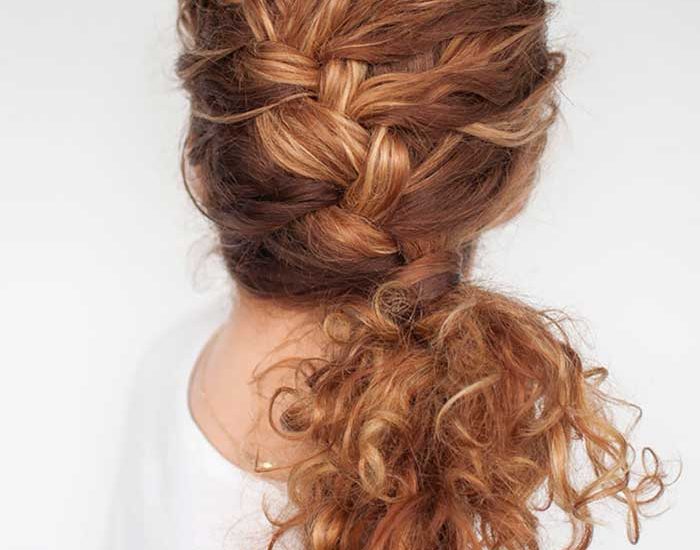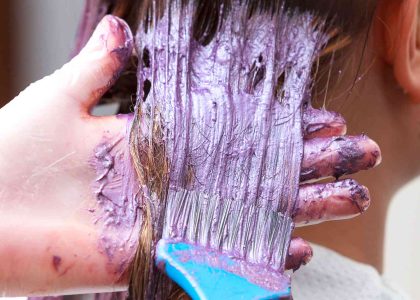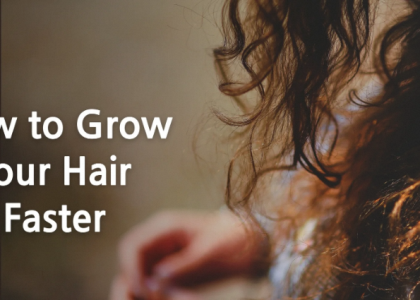Braided Hairstyles for Workout: Conquer Your Sweat Session in Style
Braids are a lifesaver for athletes and fitness enthusiasts. They’re secure, stylish, and minimize hair interference during your workout. But with so many braiding techniques, choosing the right one can feel overwhelming. Fear not, fitness fashionistas! This guide dives into the world of braided hairstyles for workouts, showcasing various styles for different hair lengths and textures.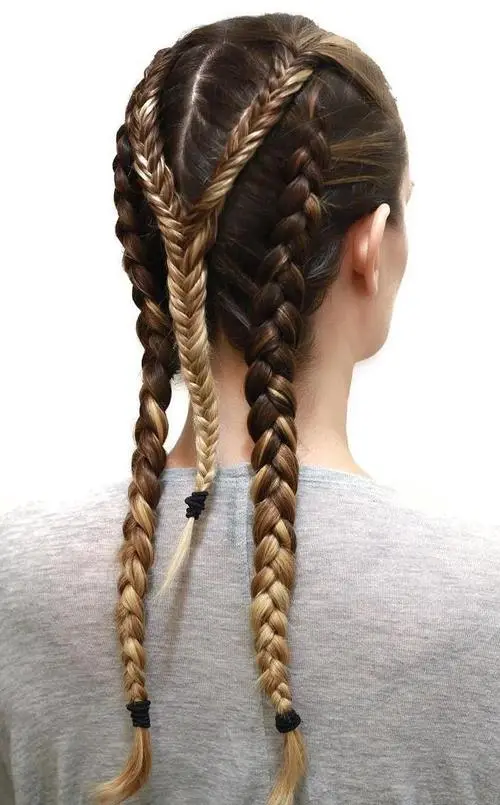
Why Braids are the Ultimate Workout Hairstyle
Braids reign supreme as the ultimate workout hairstyle for numerous reasons, but their benefits go beyond just keeping your hair out of your face. Let’s delve deeper into why braids are the ideal choice for fitness enthusiasts:
Scalp Health Benefits:
- Reduced Tension: Braids minimize pulling and tugging on the scalp, which can occur with loose hairstyles during exercise. This helps prevent irritation and discomfort, especially for individuals with sensitive scalps.
- Improved Hygiene: Braids create a barrier between hair and sweat, minimizing sweat buildup on the scalp. This can help prevent the development of scalp conditions like dandruff or folliculitis.
- Moisture Retention: Tight braids help retain natural hair oils and moisture, which is crucial for preventing dryness and breakage, especially for curly or coily hair textures.
Hair Health Benefits:
- Reduced Frizz and Tangling: Braiding significantly minimizes frizz and tangles, which can be a major concern for many hair types during workouts. This keeps your hair looking neat and polished, even after breaking a sweat.
- Minimized Breakage: Loose hair during exercise is prone to snagging and breakage. Braids, especially tight braids, protect hair strands from friction and breakage, promoting healthy hair growth.
- Versatility for Different Hair Types: Braids are incredibly versatile and adaptable to various hair types and textures. Whether you have straight, wavy, curly, or coily hair, there’s a braiding technique that works for you.
Additional Advantages:
- Time-Saving: Braiding your hair before your workout saves valuable time compared to styling loose hair. This allows you to focus on your workout without having to worry about managing your hair.
- Low Maintenance: Once braided, your hair requires minimal upkeep throughout your workout. You can focus on your exercise routine without worrying about your hairstyle coming undone.
- Stylish Options: Braids are not just functional, they can also be incredibly stylish. There are numerous braiding techniques to choose from, allowing you to express your personal style and add a unique touch to your workout look.
Understanding Your Hair: The Key to Perfect Braids
Before diving into specific styles, consider your hair type and length. Knowing your hair’s characteristics helps you choose the right braiding technique and products for optimal results. Here’s a quick breakdown:
1. Hair Texture:
- Straight Hair: Straight hair tends to hold its shape well, making it ideal for intricate braids requiring precise parting and placement. However, it can also be prone to slipping, so using the right braiding products and techniques to secure the braids is crucial.
- Wavy Hair: Wavy hair can hold braids well, especially if the waves are looser. However, tighter waves can be trickier to braid smoothly. Experiment with different braiding techniques and products to find what works best for your hair type.
- Curly or Coily Hair: Curly and coily hair requires specific braiding methods due to its unique texture. Techniques like braid locking or cornrows are well-suited for these hair types and help maintain the integrity of the curls while creating defined braids.
2. Hair Density:
- Low Density: If you have low hair density, opt for looser braiding styles to prevent putting too much tension on the hair follicles. Braiding too tightly can lead to breakage and discomfort. Consider incorporating extensions for added volume and fullness if desired.
- Medium Density: This hair density offers more versatility for braids. You can experiment with various styles, including intricate cornrows, box braids, or French braids, while keeping an eye on maintaining tension balance.
- High Density: Braiding thicker hair can be challenging, but it also allows for creating stunning and voluminous braided styles. Use thicker braiding hair extensions to match your hair density and manage the braiding process effectively.
3. Hair Porosity:
- High Porosity: Hair that absorbs moisture quickly can also lose moisture quickly. To prevent dry and frizzy braids, use leave-in conditioners and styling products specifically designed for braids. Opt for braiding hair made of synthetic materials that resist moisture absorption to minimize frizz.
- Low Porosity: Hair that repels moisture can be challenging to braid as it might not hold the style well. Use a light leave-in conditioner to improve manageability and help the braids hold their shape. Braiding hair made of natural fibers like cotton or wool can be a good option for this hair type.
4. Hair Elasticity:
- High Elasticity: Hair that stretches and snaps back easily is well-suited for most braiding techniques. You can experiment with different styles without worrying about breakage.
- Low Elasticity: Hair that breaks easily needs to be handled with care when braiding. Opt for looser braiding styles and avoid excessive manipulation to prevent breakage.
Braided Bliss: Styles for Every Hair Length
Short Hair (Above Shoulders):
- French Braid Headband: This stylish option incorporates braiding into your headband routine. Braid two small sections of hair on either side of your head and bring them together at the back, securing them under a headband.
- Cornrows: This close-to-the-scalp braiding technique offers excellent hold and is perfect for short, curly, or coily hair.
Medium Hair (Shoulders to Mid-Back):
- French Braids: This classic braid is secure and versatile. Braid both sides of your hair back for a secure style. Experiment with starting the braids high or low on your head.
- Dutch Braids (also called “boxer braids”) : Similar to French braids, Dutch braids offer a more intricate look and hold hair even more effectively. They’re perfect for high-impact workouts.
- Half-Up, Half-Down Braids: This versatile style offers security and style. French braid the top half of your hair on either side and secure them together at the back. Leave the bottom half loose or braid it as well.
Long Hair (Mid-Back and Below):
- Fishtail Braid: This stylish braid adds a unique touch to your workout look and keeps your hair secure.
- Braid-Out Ponytail: Elevate your regular ponytail by braiding the hair before securing it in a ponytail. This adds a touch of style and keeps your hair secure.
- Double Buns with Braids: Combine the security of buns with the style of braids. Braid sections of hair on either side of your head and secure them in buns at the crown.
Bonus Tip: Apply a leave-in conditioner or hair oil to damp hair before braiding to add moisture and control frizz, especially for curly and coily hair textures.
Braiding Beyond the Basics: Techniques and Tips
Once you’ve mastered the fundamental braids, explore these techniques and tips to elevate your workout hairstyle game:
- Incorporate Hair Accessories: Add colorful hair ties, beads, or ribbons to your braids for a touch of personality.
- Braiding with Extensions: For those with shorter hair, consider using braiding extensions to achieve longer braids.
- Braiding on Wet Hair: Braiding damp hair helps create a smoother and more defined look.
- Start Your Braids Early: Starting your braids higher on your head provides a more secure hold, especially for longer or thicker hair.
- Practice Makes Perfect: The more you braid, the easier and faster it becomes. Dedicate some time outside of your workout routine to practice different braiding techniques.
Maintaining Your Braids: Post-Workout Care
Proper care after your workout is crucial for maintaining your braids and keeping your hair healthy. Here are some tips:
- Loosen the braids gently: After your workout, loosen your braids carefully to prevent pulling or breakage.
- Refresh your scalp: Use a cool mist spray bottle to remove sweat buildup from your scalp without messing up your braids.
- Deep condition regularly: Regularly deep condition your hair to replenish moisture lost during workouts and maintain healthy hair growth.
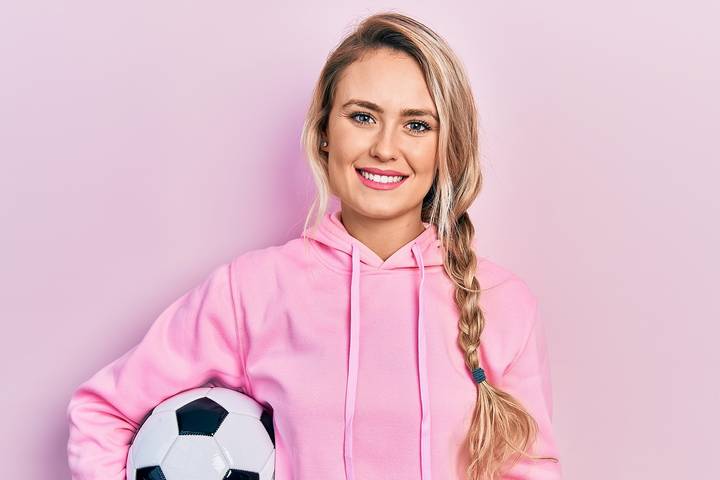
Embrace Your Confidence: Braided hairstyles offer a stylish and functional solution for your workout routine. With the right braid for your hair type and length, you can conquer your sweat session in style and comfort. Remember, the most important aspect is to feel confident and comfortable while you move your body. So, experiment with different braiding techniques, have fun with the process, and rock your workout look with confidence!

